Monastery of the Serra do Pilar - V.N. de Gaia - Portugal
Monastery of the Serra do Pilar

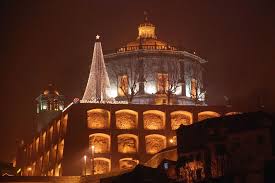
The Serra do Pilar or Serra de São Nicolau or Serra de São Nicolau de Vila Nova is an elevation overlooking the Douro River located in the parish of Santa Marinha, Vila Nova de Gaia, in a position bordering the city of Porto. There is the famous Monastery of Serra do Pilar (construction started in 1538). For many years transformed into barracks and currently classified as World Heritage (UNESCO), this monastery is today one of the most important tourist attractions in the region.
During the siege of Oporto (1832-1833), it was the only stronghold that the liberals managed to keep south of the Douro River. It stands in a dominant position giving a beautiful view over the Douro River and the Ribeira and Historic Center of Porto.
Monastery
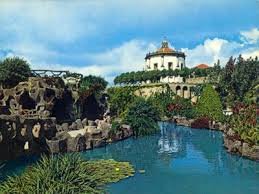
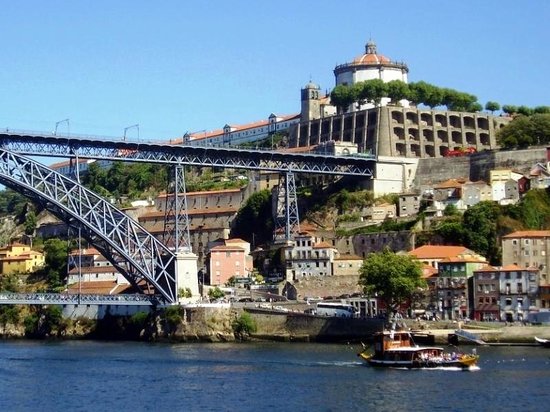
From its origin this monastery had several denominations; was designated by Monastery of the Savior of Porto (1542, 1553, 1566, 1572), by the New Monastery of the Savior (1559), by the Monastery of the Savior of Vila Nova (1570), by Monastery of the Serra (1694, 1737, 1740) by Monastery or Convent of Saint Augustine of the Mountain range (1720, 1746), or Monastery of Saint Augustine of Serra do Pilar. The popular name for which it is nowadays best known - Serra do Pilar Monastery - originated in devotion to the Virgin of Pilar, dating back to the period of the Philippine dynasty (according to some sources an image of the Virgin of Pilar was placed in the main chapel of the Serra do Pilar Monastery in 1678 [note 2]). From the memory of this devotion remains, besides the denomination of the monastery, the annual fair that takes place next to the monastery in the date of the old pilgrimage (August 15).
The foundation of this monastery, originally of the invocation of Christ, Saint Savior of the World, is due to the transfer of the community of the Monastery of Grijó (whose buildings were in a high state of degradation), of the Order of the Canons of St. Augustine , to a place near the city of Porto. A prominent site was chosen on the south bank of the Douro River, in the Serra de São Nicolau de Vila Nova, in front of that city. The origin of the initiative dates back to 1527, when King João III and Frei Brás de Barros engaged in the union of all the monasteries of that order in a single congregation based in Santa Cruz de Coimbra and the new location was aimed at facilitating the connection to the remaining houses of Entre-Douro-e-Minho. It is not known exactly who drew the original buildings, but the names of Diogo de Castilho and João de Rouo figure in documentary sources of the time and everything indicates to have been a work of joint authorship, although, with a high degree of probability, according to a general scheme established by Frei Brás de Barros, translating certain philosophical, theological and architectural ideas that were then current in the court that reflected the renewal of the thought occurred in the Renaissance.
Construction began in 1538 and the change of the religious to the new house took place four years later, still for temporary facilities, with the early church being sacred in 1544. The monastery's essentials would be ready in 1564, with the completion of the cloister until 1583. The original configuration of the monastery would hardly last; in 1597 the construction of a new, larger church was begun, because the initial one was considered too small and small, and the authorship of the new architectural design was unknown; it is also thought that this new building will have taken place simultaneously with a first displacement of the cloister, carried out with use of the original elements, which seems to be evidenced by the characteristics of the main elements of stonework (columns or portals), stylistically dating from the first half of the 16th century (following the founding of the new church, in 1599 the invocation of the monastery became St. Augustine). The works of this phase were particularly time-consuming, with the construction of the church's dome still standing for long years. The building would be finished between 1669 and 1672, and the new inauguration took place on July 17, 1672. In 1690 two contracts of pedraria were signed with a view to a new alteration of several buildings, aiming in particular to open space for the construction of a retro chorus attached to the main chapel (Domingos Lopes' moth), which implied, once again, the dismantling and reconstruction of the Renaissance cloister; in the next year Filipe Silva was hired to execute an altarpiece for the high altar. The works of this last phase were fast and led, essentially, to the current configuration of the monastery.
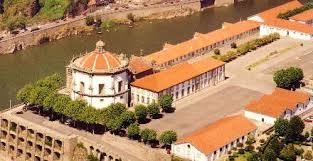

The geo-military relevance of the monastery resulting from its privileged location on the river Douro, Vila Nova de Gaia and the city of Porto was evident during the French invasions (1807-1814), the Siege of Porto (1832-1833), and to Maria da Fonte (1846-1847), leading to the construction of a fortified system. In 1835, a year after the decrees of religious orders were decreed and the building was incorporated into the patrimony of the state, the site of the Serra do Pilar was elevated to the 1st class War Square. The wars that took place over the years left several ruined buildings, particularly the southern wing, and in 1927 reconstruction was begun. In 1947 part of the facilities were ceded to the Artillery Regiment No. 2 to be installed there a small museum; ten years later the church opened to worship and from the end of the twentieth century new maintenance works were carried out. In 2012 a space for the disclosure of the classified Monumental Heritage of the North Region was opened here, making it possible to open to the public some of the monastery's buildings.
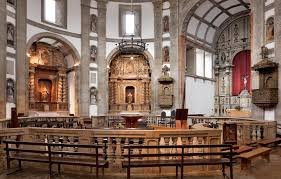
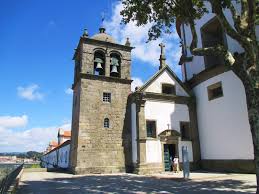
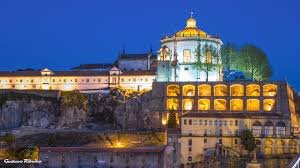
Archaeological excavations have revealed human occupation at the mouth of the Douro River since the 8th century BC, when there was a Phoenician trading settlement there. By the 5th century the town had become a very important administrative and trading centre. In the succeeding centuries it was subjected to attacks and pillage by successive groups, including Swabians, Visigoths, Normans, and Moors. By the early 11th century, however, it was firmly established as part of the Castilian realm. Expansion came in the 14th century with the construction of massive stone town walls to protect its two urban nuclei: the original medieval town and the hitherto extramural harbour area. The Historic Centre of Oporto is located within the line of these Fernandine walls (named after Dom Fernando, in whose reign they were completed in 1376), together with some smaller areas that retain their medieval characteristics. This area conserves to a large extent Oporto’s medieval town plan and urban fabric, along with some later monumental insertions as well as the two remaining sections of the Fernandine walls.


Congratulations, Your Post Has Been Added To The Steemit Worldmap!
Author link: http://steemitworldmap.com?author=paulocouto
Post link: http://steemitworldmap.com?post=monastery-of-the-serra-do-pilar-v-n-de-gaia-portugal
Want to have your post on the map too?
Muy interesante. 👏👏😀😀
Muchas gracias!!!
Namaste